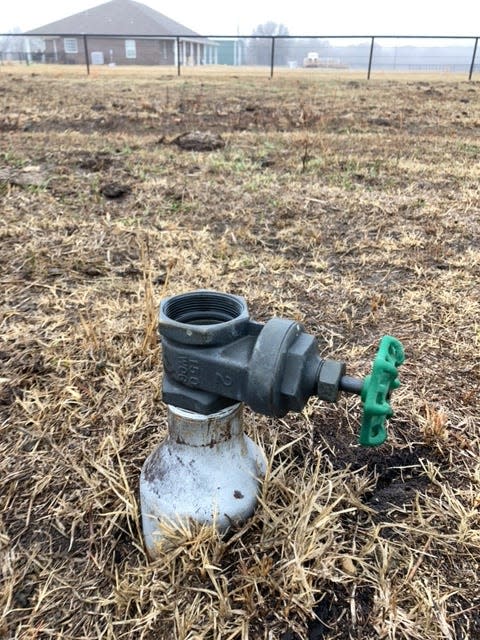Montana tribes receive $4.3 million to plug leaking oil and gas wells

On Thursday, the U.S. Department of the Interior announced that tribal governments at three of Montana’s seven Indian reservations will soon receive $4.34 million to help plug and reclaim 345 abandoned oil and gas wells on tribal lands. The money comes in addition to $30.14 million the State of Montana has already received in two rounds of funding to plug 238 abandoned oil and gas wells on public and private lands across the state.
“Indigenous communities have long been disproportionately burdened by environmental pollution,” said Interior Secretary Deb Haaland. “The Department is committed to improving safety and health conditions for Indian Country, honoring Tribal sovereignty, and supporting sustainable development and good-paying jobs.”
More than half the money has been awarded to the Fort Peck Reservation in northeastern Montana, with smaller sums awarded to Rocky Boy’s Reservation southwest of Havre and the Fort Belknap Reservation west of Malta.
Nationwide the Department awarded more than $39 million to tribes on 10 reservations, primarily in the western United States to begin the process of plugging abandoned wells in Indian country.

When an oil or natural gas well reaches the end of its productive life it is typically filled with cement and the surrounding metal framework removed. The “plugged” well is then abandoned, leaving little evidence of is existence behind except for a low protruding well head. However, over the years many wells have simply been abandoned or “orphaned,” often after the company that owns them has gone bankrupt leaving no one behind responsible for their care.
Far from mere eyesores, orphan natural gas wells are a major source of methane gas emissions in the United States. Methane is a potent greenhouse gas, with 25 times the warming power of carbon dioxide. The U.S. Environmental Protection Agency estimates there are 2.1 million orphaned oil and gas wells across the U.S., which release around seven million metric tons of methane into atmosphere each year – roughly equivalent to 1.5 million cars.
Abandoned wells also have the potential to contaminate the land, air and water that surround them, potentially harming ecosystems, wildlife, livestock, and humans. Many orphaned wells are situated on farmland, and if not maintained could potentially contaminate the soil and groundwater with toxic pollutants.
“Millions of Americans live within a mile of an orphaned oil and gas well,” the Interior Department stated in a news release earlier this year. “Orphaned wells are polluting backyards, recreation areas, farmland, and public spaces in urban, rural and suburban areas. Methane leaking from many of these unplugged wells is a serious safety hazard and is a significant cause of climate change.”
The cost to plug all orphan wells in the U.S. is enormous. According to a paper published peer-reviewed journal Environmental Science & Technology the median cost to plug a single well and reclaim the surface around it is $76,000 but can be significantly higher depending upon the well’s depth, age and location. The nonpartisan Government Accountability Office (GAO) estimates it could cost as much at $300 billion to plug all the orphan wells in the U.S.
Since August 2022 the Interior Department has awarded $660 million to 26 states to begin work plugging 123,000 high-priority orphan wells across the U.S. The money comes as part of the bipartisan Infrastructure Investment and Jobs Act (IIJA) passed by Congress in 2021, and frequently referred to as the Infrastructure Bill.
Tribal governments were initially left out orphan well funding as the Interior Department officials negotiated with tribal governments over the terms and conditions of funding.
“As we steward these investments, we are working directly with Tribes every step of the way to ensure that their voices are integrated into decision-making processes,” said Bryan Newland, the Assistant Secretary of the Interior for Indian Affairs. “This is a key component of the President’s Investing in America agenda – building out the infrastructure to equip Tribes now and into the future.”
Thursday’s news release states that In the coming months that there will be an additional phase of funding opportunities for Tribes to address orphaned wells on Tribal lands.
This article originally appeared on Great Falls Tribune: Interior Department awards $4.3 million to Montana tribes to plug wells
